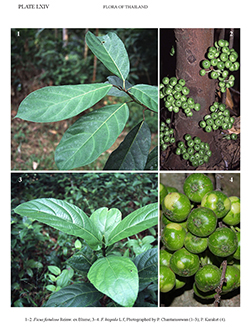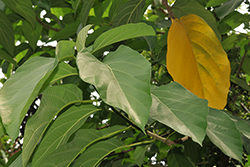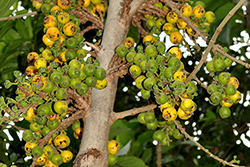e-Flora of Thailand
Volume 10 > Part 4 > Year 2011 > Page 566 > Moraceae > Ficus
SY06. Ficus hispida L.f.wfo-0000688701
Suppl. Pl.: 442. 1782; Kurz, Forest Fl. Burma 2: 460. 1877; Miq., Ann. Mus. Bot. Lugd.-Bat. 3: 282, 296. 1867; King, Ann. Roy. Bot. Gard. (Calcutta) 1(2): 116, t. 154, 155. 1888; Ridl., Fl. Malay Penins. 3: 342. 1924; Corner, J. Malayan Branch Roy. Asiat. Soc. 11: 31, f. 16, 17, 1933; Kochummen, Tree Fl. Malaya 3: 149. 1978; C.C.Berg & Corner, Fl. Males., Ser. 1, Spermat. 17(2): 426. 2005; Chantaras. & Kumtong, J. Thail. Nat. Hist. Mus. 1: 79, t. 1, 3. 2005.— Gonusuke hispida (L.f.) Raf., Sylv. Tellur.: 58. 1838.— Covellia hispida (L.f.) Miq., London J. Bot. 7: 462. 1848. Plate LXIV: 3–4.
Accepted Name : This is currently accepted.
Synonyms & Citations :
Description : Shrub or tree to 10(–15) m tall. Leafy twigs 3–10 mm thick, whitish strigose, hirtellous, strigillose or appressed-puberylous, usually with pairs of nodal waxy glands at the bases of the petioles (or on the nodes); internodes hollow; periderm flaking off (often starting below the leaves). Leaves (sub)opposite or spirally arranged (or distichous); lamina oblong, elliptic, subobovate or subovate, 5–25(–35) by 2.5–10(–16) cm, symmetrical or slightly asymmetrical, chartaceous, (lower surface often drying much paler than the upper), apex acuminate, base cuneate to subcordate, margin (often) crenate-dentate, denticulate (or to subserrate) or subentire; upper surface sparsely to rather densely whitish strigillose, hispidulous or appressed-puberulous, ± scabrous or smooth, lower surface (rather) densely whitish strigose, hirtellous or to appressed-puberulous on the smaller veins, smooth, cystoliths only below; lateral veins (4–)6–10 pairs, the basal pair usually branched, short or to ½ the length of the lamina, other lateral veins often branched or forked away from the margin, tertiary venation scalariform, ± prominent beneath; waxy glands small, in the axils of lateral veins in the middle part of the lamina or also smaller ones in furcations of lateral veins; petiole 1–6.5(–10) cm long, whitish strigose to dark brown hirtellous to appressed-puberulous, the epidermis flaking off; stipules (0.5–)1–2.5 cm long, whitish appressed-puberulous, strigose or hirtellous, caducous. Figs axillary, solitary (or in pairs), or cauliflorous on branchlets to 1.5 m long arising in clusters from the main branches or trunk, sometimes also on the base of the trunk; peduncle 0.5–2(–3.5) cm long; basal bracts 3, usually verticillate, 0.5–2.5 mm long; receptacle subglobose to depressed-globose, 1.5–2.5 cm diam. when dry, to 3.5 cm diam. when fresh, to 0.6 cm long stipitate or non-stipitate, often ribbed, whitish puberulous, with a few lateral bracts, pale yellow at maturity, apex convex to flat or concave, ostiole 24 mm diam., surrounded by 5–6 apical bracts; internal hairs absent.
Thailand : Throughout the country.
Distribution : Sri Lanka, Pakistan, India (including the Andaman and Nicobar Islands?), Nepal, Sikkim, Bhutan, Bangladesh, Burma, S China, Vietnam, Laos, Cambodia, Peninsular Malaysia, Singapore, Indonesia (Sumatra, Java – type, Kalimantan, Sulawesi, Lesser Sunda Islands, Moluccas), the Philippines, Papua New Guinea, Australia.
Ecology : Evergreen and mixed deciduous forests, often in secondary growths, to 1,600 m alt.
Vernacular : Duea plong (เดื่อปล้อง)(Nakhon Si Thammarat, Saraburi, Northern); duea pong (เดื่อป่อง)(Bangkok); duea sai (เดื่อสาย)(Chiang Mai); ta-oe-na (ตะเออน่า), ao-nae (เอาแหน่)(Karen-Mae Hong Son); ma duea plong (มะเดื่อปล้อง)(Central); ha-ko-sa-ni-ya (ฮะกอสะนียา)(Malay-Narathiwat).



